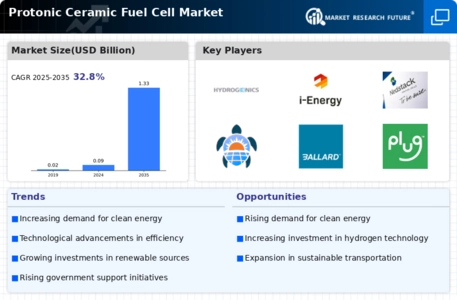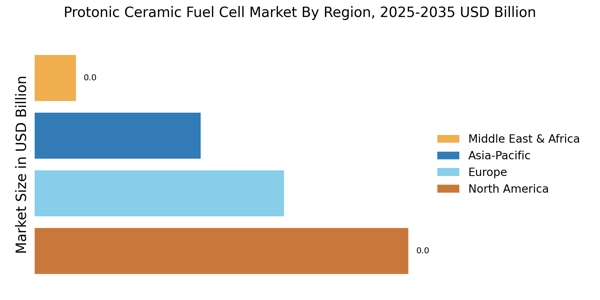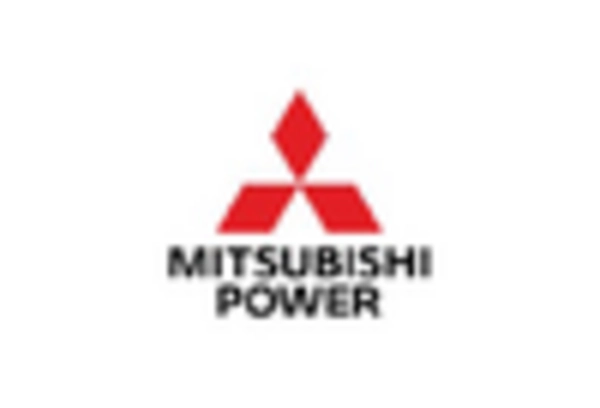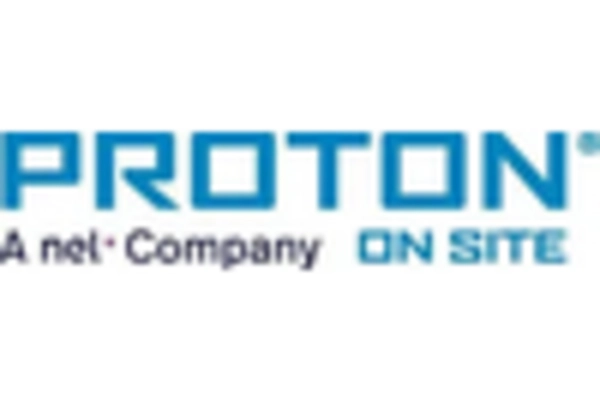Government Incentives and Support
Government incentives and support play a crucial role in the Protonic Ceramic Fuel Cell Market. Various countries are implementing policies that promote the development and deployment of fuel cell technologies. These initiatives often include financial subsidies, tax incentives, and research grants aimed at fostering innovation in clean energy. For instance, funding for research and development in fuel cell technologies has seen a marked increase, with some nations allocating millions to support advancements in this field. Such governmental backing not only enhances the market's growth potential but also encourages private sector investment, thereby solidifying the Protonic Ceramic Fuel Cell Market's position in the energy landscape.
Rising Demand for Clean Energy Solutions
The Protonic Ceramic Fuel Cell Market is experiencing a notable surge in demand for clean energy solutions. This trend is largely driven by increasing awareness of environmental issues and the need to reduce greenhouse gas emissions. As governments and organizations worldwide commit to ambitious carbon neutrality goals, the adoption of fuel cell technologies is likely to accelerate. The market for fuel cells is projected to grow significantly, with estimates suggesting a compound annual growth rate of over 20% in the coming years. This growth is indicative of a broader shift towards sustainable energy sources, positioning the Protonic Ceramic Fuel Cell Market as a pivotal player in the transition to cleaner energy alternatives.
Growing Applications Across Various Sectors
The Protonic Ceramic Fuel Cell Market is witnessing an expansion in applications across diverse sectors. Industries such as transportation, residential power generation, and backup power systems are increasingly adopting fuel cell technologies. For example, the automotive sector is exploring fuel cells as a viable alternative to traditional internal combustion engines, with several manufacturers investing in hydrogen fuel cell vehicles. Additionally, the demand for reliable backup power solutions in commercial and residential settings is driving interest in fuel cell systems. This diversification of applications is likely to bolster the market's growth, as it opens new avenues for the Protonic Ceramic Fuel Cell Market to thrive.
Technological Innovations in Fuel Cell Design
Technological innovations are significantly shaping the Protonic Ceramic Fuel Cell Market. Recent advancements in materials science and engineering have led to the development of more efficient and durable fuel cells. Innovations such as improved electrolyte materials and enhanced electrode designs are contributing to higher performance and lower costs. The introduction of novel manufacturing techniques is also streamlining production processes, making it more feasible to scale up operations. As these technologies continue to evolve, they are expected to enhance the competitiveness of the Protonic Ceramic Fuel Cell Market, attracting further investment and interest from various sectors, including transportation and stationary power generation.
Increased Investment in Renewable Energy Infrastructure
Investment in renewable energy infrastructure is a key driver for the Protonic Ceramic Fuel Cell Market. As the world shifts towards sustainable energy sources, there is a growing emphasis on integrating fuel cell technologies into existing energy systems. This trend is reflected in the rising capital allocated to renewable energy projects, with billions being invested in infrastructure that supports hydrogen production and distribution. Such investments not only enhance the viability of fuel cells but also create synergies with other renewable technologies, potentially leading to a more resilient energy ecosystem. Consequently, the Protonic Ceramic Fuel Cell Market stands to benefit from this influx of investment, positioning itself as a cornerstone of future energy solutions.


















Leave a Comment